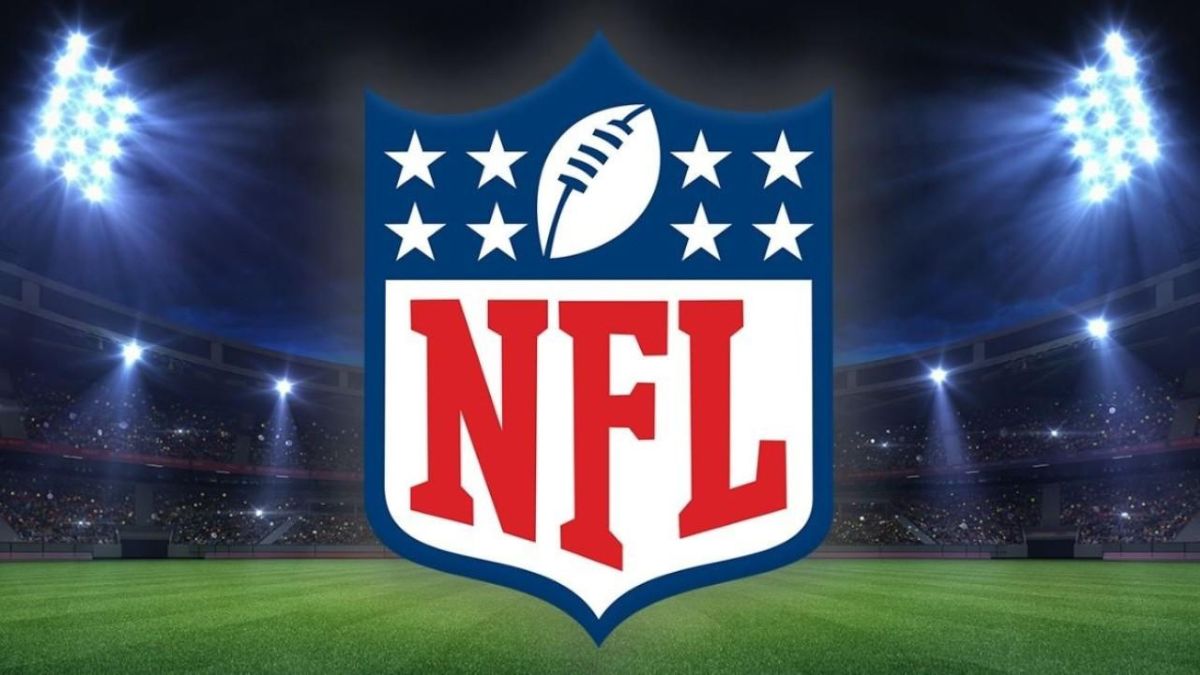SPORTS
The Rise of Sports Surge: How Social Media is Transforming Fan Engagement

Sports have always been a powerful unifier. But in today’s digital age, that connection has taken on new dimensions. Enter the phenomenon known as sports surge—a wave of fan engagement driven by social media platforms and their influence on how we experience our favorite games, athletes, and teams.
Gone are the days when cheering for your team was limited to game day rituals or water cooler conversations. Now, fans can instantly connect with each other and their idols through tweets, Instagram stories, TikTok videos, and live streams. This transformation is not just about likes or shares; it’s reshaping the very fabric of fan interaction.
As social media continues to evolve at lightning speed, so too does its impact on the world of sports. Whether you’re an ardent supporter who follows every play or someone looking to understand this exciting shift in culture, there’s no denying that sports surge is here—and it’s changing everything we know about fandom.
The Impact of Social Media on Sports Fan Engagement
Social media has completely reshaped the landscape of sports fan engagement. Gone are the days when fans waited for game highlights on TV. Now, they can access real-time updates, behind-the-scenes content, and exclusive interviews with just a few taps.
Platforms like Twitter and Instagram provide a direct line between athletes and their supporters. Fans feel more connected than ever before. They can interact with their favorite players in ways that were unimaginable years ago.
Live tweeting during games creates an electric atmosphere online. Fans join conversations, share opinions, and celebrate victories together. This communal experience fosters loyalty among followers.
Moreover, social media amplifies grassroots movements within sports communities. Local teams gain visibility as passionate fans rally around them using hashtags or viral challenges.
As digital interactions grow richer and more diverse, traditional boundaries blur—redefining what it means to be a sports fan today.
The Role of Social Media Influencers in the Rise of Sports Surge
Social media influencers have become pivotal in shaping the sports surge phenomenon. Their ability to connect authentically with audiences drives engagement like never before.
These influencers often bridge the gap between athletes and fans. They create relatable content that resonates on a personal level, making sports more accessible. Followers feel closer to their favorite teams and players through daily updates, behind-the-scenes glimpses, or live interactions.
Moreover, brands see value in partnerships with these personalities. Collaborations can amplify reach and boost visibility during key sporting events. Promotions from trusted voices make campaigns more effective.
Influencers also foster communities around specific sports or teams. These digital gatherings encourage sharing of experiences, opinions, and passion for the game—further contributing to the growing interest in athletics throughout social channels.
Case Studies: Successful Examples of Social Media Marketing in Sports
One standout example of effective social media marketing in sports comes from the NBA. The league has harnessed platforms like Twitter and Instagram to create engaging content that resonates with fans. Highlight reels, player interviews, and behind-the-scenes footage keep followers connected.
Another impressive case is Nike’s “Dream Crazy” campaign featuring Colin Kaepernick. This initiative ignited conversations around social justice while reinforcing loyalty among their audience. The campaign saw a significant increase in online engagement and sales.
The NFL also leveraged TikTok during its 2021 season, tapping into younger audiences by sharing fun challenges and game highlights. This strategy not only expanded their viewer base but also enhanced fan interaction through user-generated content.
These examples illustrate how strategic use of social media can elevate brand presence and foster deeper connections with fans across various sports platforms.
Challenges and Controversies Surrounding Social Media in Sports
While social media offers incredible engagement opportunities, it also brings a host of challenges and controversies. One major issue is the spread of misinformation. Fans can easily misinterpret or share false information about players, games, or teams.
Another concern is the impact on player mental health. Athletes often face intense scrutiny online, leading to anxiety and stress. The constant pressure to perform both on and off the field can take its toll.
Moreover, fan interactions aren’t always positive. Online harassment and toxicity have become common in sports discussions, creating an unhealthy environment for many.
There’s the question of privacy. Players may feel their lives are under a microscope as they navigate public personas versus personal realities. This duality complicates how athletes engage with fans while maintaining boundaries that protect their well-being.
Future Implications for the Sports Industry
As social media continues to evolve, its influence on the sports industry will deepen. The rise of platforms like TikTok and Instagram Reels is changing how teams interact with fans. Shorter content formats engage younger audiences more effectively than traditional methods.
Fan-generated content will also gain prominence. Teams may find value in empowering fans to share their experiences, creating a sense of community around every game or event. This grassroots approach fosters loyalty and expands reach organically.
Data analytics from social media interactions can inform strategies for marketing and engagement. Understanding fan behavior through likes, shares, and comments provides insights that were once difficult to gauge.
Moreover, virtual reality (VR) could become integral in enhancing the viewing experience. Imagine experiencing a game as if you were sitting courtside from your living room.
This dynamic landscape presents both opportunities and challenges for stakeholders at all levels within the sports sector. Adaptation will be key for success.
Conclusion
The rise of sports surge is undeniably linked to the transformative power of social media. As platforms like Twitter, Instagram, and TikTok continue to evolve, they redefine how fans connect with their favorite teams and athletes. Engagement has transcended traditional boundaries; it’s now instantaneous and interactive.
Social media influencers play a pivotal role in this phenomenon. They not only amplify team messages but also create authentic connections with audiences. Their ability to reach millions makes them essential partners for sports brands looking to enhance visibility.
Case studies from various leagues highlight successful strategies that have redefined fan engagement. From viral campaigns to interactive live streams, organizations are continuously exploring innovative ways to captivate audiences.
However, the integration of social media into the sports industry isn’t without challenges. Issues such as misinformation, online harassment, and brand controversies can undermine trust between fans and teams.
Looking ahead, the implications for the sports industry are profound. Teams must navigate this new landscape wisely while embracing technology’s potential for deeper fan engagement.
As we witness these shifts unfold further, it’s clear that sports surge will continue reshaping our experience as fans—creating opportunities that were previously unimaginable.
SPORTS
NFLbite vs Other Streaming Services: What Sets It Apart?

Football season is here, and fans are eager to catch every thrilling moment of the NFL games. With so many streaming services available, it can be a challenge to find the best option for your viewing needs. Enter NFLbite—a platform that promises an unmatched experience for die-hard football enthusiasts. But what exactly sets NFLbite apart from its competitors? Let’s dive into a comparison of this unique service with other streaming platforms in the market and explore why more fans are turning to NFLbite as their go-to source for live football action.
Comparison with other streaming services
When it comes to streaming NFL games, many platforms offer a variety of options. However, not all are created equal. Services like Hulu Live and YouTube TV boast extensive channel lineups but often come with hefty subscription fees.
NFLbite stands out due to its accessibility. It’s a free platform that doesn’t require long-term commitments or expensive subscriptions. This aspect alone makes it appealing for casual fans who want flexibility without breaking the bank.
Another notable difference is the user interface. While some services can be cluttered with too many options, NFLbite provides a streamlined experience focused solely on football content.
Additionally, other streaming services may restrict access based on geographical locations or enforce regional blackout rules. NFLbite circumvents these issues by allowing users from various regions to catch their favorite teams without hassle.
Benefits of using NFLbite
NFLbite offers a seamless streaming experience for football enthusiasts. It boasts an extensive array of live games, allowing fans to catch every thrilling moment without missing a beat.
One standout benefit is its user-friendly interface. Navigating through the platform is straightforward, making it accessible even for those less tech-savvy. This ease of use enhances the overall viewing experience.
Cost-effectiveness is another significant advantage. Unlike traditional cable subscriptions, NFLbite provides affordable access to premium content, saving users money while delivering high-quality streams.
Additionally, NFLbite supports multiple devices. Whether you prefer watching on your laptop, tablet or smartphone, you can enjoy your favorite matches anytime and anywhere.
The community aspect cannot be overlooked either. Engaging with fellow fans during games adds an exciting social element that enhances the viewing experience further.
Unique features of NFLbite
NFLbite stands out in the crowded sports streaming landscape with its remarkable features. One of its most appealing aspects is the user-friendly interface, designed for seamless navigation. Whether you’re a tech novice or a seasoned streamer, accessing your favorite games is effortless.
Live game coverage has never been smoother. NFLbite offers real-time updates and highlights, so fans can stay engaged even when they’re on the go. The platform also ensures minimal lag, making it perfect for those nail-biting moments during critical plays.
Another unique aspect is its community engagement. Users can connect with fellow fans through chat rooms and discussion boards while watching games live. This feature fosters a sense of camaraderie among viewers who share their passion for football.
NFLbite frequently updates its content library to include classic matches and exclusive interviews—not just current season coverage but an entire football experience at your fingertips!
How to access and use NFLbite
Accessing NFLbite is straightforward. Start by visiting the official website on your browser. You don’t need to create an account, which saves you time and hassle.
Once there, navigate through the user-friendly interface. It’s designed for easy browsing of live games and highlights. Just click on what interests you.
For better performance, consider using a reliable internet connection. This ensures smooth streaming without interruptions.
If you’re looking for specific games or teams, use the search feature. It helps narrow down options quickly.
Additionally, make sure to check out any ads that might appear during your viewing experience; they help support free access to content.
NFLbite doesn’t require complicated setups or subscriptions—just jump in and enjoy!
Reviews and feedback from users
User reviews of NFLbite paint a vivid picture of its appeal. Many fans praise the platform for its user-friendly interface and seamless navigation. They appreciate how easy it is to find live games and highlights.
Performance is another highlight in feedback. Users frequently mention minimal buffering times, which enhances their viewing experience during intense match moments. This reliability sets NFLbite apart from other streaming services that can struggle under high traffic.
Additionally, users value the diverse range of content available on NFLbite. From live broadcasts to replays, many feel they are getting more than just game coverage.
Support also receives positive remarks; quick responses to queries show commitment to customer satisfaction.
These insights reveal why so many sports enthusiasts turn to NFLbite as their go-to option for streaming football games effortlessly.
Conclusion: Why NFLbite is the top choice for sports streaming
When it comes to sports streaming, NFLbite stands out for several compelling reasons. Its user-friendly interface makes navigation seamless, ensuring that fans can easily find their favorite games without unnecessary hassle. Unlike many competitors, NFLbite offers a wide range of live broadcasts and on-demand content at no extra cost.
Furthermore, the platform’s reliability is commendable. Users often report consistent streaming quality without frequent interruptions or buffering issues—a significant advantage over other services in this crowded market.
Accessing NFLbite is straightforward. Whether you’re using a computer or mobile device, the process is simple and does not require complicated setups or subscriptions. This accessibility appeals to both tech-savvy users and those who prefer a more traditional viewing experience.
User feedback highlights another major strength: community engagement. Fans appreciate being part of an active community where they can discuss games in real-time with fellow enthusiasts. This social aspect adds value beyond just watching the game; it’s about being connected and engaged with others who share similar passions.
With its unique features tailored specifically for football fans and an emphasis on user satisfaction, NFLbite has garnered a loyal following among sports enthusiasts looking for reliable streaming options. For anyone serious about catching every moment of the action during football season, choosing NFLbite means opting for convenience and quality above all else—making it arguably one of the best platforms available today for avid sports followers.
SPORTS
Pushing the Limits: A Day in the Life of Samuel Guez VTT

Meet Samuel Guez, a name that resonates in the world of extreme mountain biking. With adrenaline coursing through his veins, he pushes the limits of what’s possible on two wheels. From heart-stopping descents to gravity-defying stunts, Samuel embodies the spirit of adventure and thrill-seeking. His journey is not just about speed; it’s about conquering challenges and embracing the wild landscapes that serve as his playground.
As you delve into a day in the life of this extraordinary athlete, prepare to be inspired by his dedication and passion for VTT (Vélo Tout Terrain). Whether you’re an avid biker or simply curious about extreme sports, you’ll find insights into what drives Samuel Guez VTT to live on the edge every single day. Buckle up – it’s going to be an exhilarating ride!
The World of Extreme Mountain Biking
Extreme mountain biking is a thrilling adventure that tests the limits of both rider and machine. This sport embraces rugged terrains, steep descents, and breathtaking landscapes.
Riders like Samuel Guez VTT seek out the most challenging trails. They navigate rocky paths, sharp turns, and unpredictable weather conditions. Every ride becomes a personal challenge to conquer obstacles that nature has laid out.
The adrenaline rush is undeniable. As tires grip the earth, there’s an exhilarating sense of freedom mixed with danger. Each descent offers new thrills while pushing riders to their physical and mental boundaries.
This sport isn’t just about speed; it celebrates skillful control over powerful bikes designed for extreme conditions. It requires precision in every maneuver as well as an unyielding determination to succeed against all odds.
For enthusiasts like Samuel Guez VTT, extreme mountain biking isn’t merely a pastime; it’s a way of life filled with passion and relentless pursuit of adventure.
Training and Preparation for Competitions
Training for extreme mountain biking is no easy feat. Samuel Guez VTT dedicates countless hours to refining his skills and building endurance. His routine includes intense rides on various terrains, mimicking competition conditions.
Strength training plays a crucial role in his preparation. He focuses on core stability and leg strength, essential for handling tough descents and sharp turns. Cross-training with activities like swimming or running helps improve overall fitness without wearing out specific muscles.
Nutrition also holds significant importance in Samuel’s regimen. A balanced diet fuels long rides and recovery days alike. He carefully selects meals rich in carbohydrates, proteins, and healthy fats to maintain peak performance.
Mental preparation is equally vital. Visualization techniques help him anticipate challenges during races while boosting confidence levels before competitions unfold. Each aspect of his training intertwines seamlessly, ensuring he is always ready to push the limits when it counts most.
Challenges and Risks Faced by Samuel Guez VTT
Extreme mountain biking isn’t just about the adrenaline; it comes with its share of challenges and risks. For Samuel Guez VTT, every ride demands a constant awareness of his surroundings.
The terrain alone poses significant hurdles. Rocky trails and steep descents can turn treacherous in an instant. One wrong move might lead to serious injuries or worse.
Weather is another factor that keeps Samuel on his toes. A sunny day can quickly shift to rain, making trails slippery and unpredictable. Navigating these conditions requires skill and quick thinking.
Then there are the mental barriers—fear of failure or injury can weigh heavily during competitions. Pushing through those fears is part of what makes Samuel resilient.
Injuries are always a looming threat for any extreme athlete. The fear of falling adds pressure, yet it’s this very aspect that fuels his passion for the sport. Each challenge faced only drives him further on this exhilarating journey.
The Mental and Physical Demands of Extreme Mountain Biking
Extreme mountain biking isn’t just a test of physical strength; it’s a mental game too. Riders like Samuel Guez VTT face grueling trails that require unwavering focus and sharp decision-making skills. Each descent demands split-second choices to navigate rocks, roots, and steep drops.
Physically, the sport pushes limits. Endurance is key for long rides while explosive power is essential for climbing rugged terrain or executing jumps. Muscles ache from hours spent on unpredictable paths.
But it’s not all about brawn. Mental resilience plays a critical role in overcoming fear and maintaining confidence during high-stakes moments. Visualizing success before attempting daunting features can make all the difference.
The connection between body and mind fuels performance at every level of extreme mountain biking, making it an exhilarating yet challenging pursuit for athletes like Samuel Guez VTT to conquer daily.
Life Outside of the Sport: Balancing Passion and Responsibilities
Samuel Guez’s life is not just about extreme mountain biking. Beyond the trails and adrenaline, he navigates a world filled with responsibilities. Balancing his passion for VTT with day-to-day obligations can be challenging.
Family plays a crucial role in Samuel’s life. He cherishes moments spent with loved ones, often sharing stories of his adventures on the bike. These connections ground him and provide support through ups and downs.
Work commitments also demand attention. Samuel tackles professional projects that require focus and dedication, ensuring he remains financially stable while chasing his dreams.
Despite the challenges, he finds joy in blending work-life balance with athletic pursuits. This harmony fuels his motivation to excel in both realms—on the bike and off it.
Social engagements are equally important for maintaining relationships outside of sports. Friends gather for casual rides or simply to unwind after intense training sessions, creating bonds that enhance Samuel’s overall experience.
Future Goals and Aspirations in Extreme Mountain Biking
Samuel Guez VTT has always set his sights high. His future goals stretch beyond the horizon of mountain trails. Competing in international championships is on his radar, where he hopes to showcase his skills against the best.
Exploring uncharted terrains also excites him. He dreams of tackling legendary tracks that push boundaries and redefine extreme biking. Every ride is an opportunity for discovery and growth.
In addition to competing, Samuel aspires to inspire others through workshops and mentorship programs. Sharing knowledge with budding riders fuels his passion for the sport.
Sustainability matters deeply to him too. Advocating for eco-friendly practices within mountain biking communities remains a priority in his vision for the future.
With each pedal stroke, Samuel Guez envisions a vibrant path ahead—a journey filled with challenges, triumphs, and endless possibilities.
Conclusion: A Glimpse into the Thrilling Life of Samuel Guez
Samuel Guez embodies the spirit of extreme mountain biking. His days are filled with adrenaline, challenges, and triumphs that few can fathom. With every ride down rugged terrain, he pushes his limits further than most dare to go.
The world of VTT is not just a sport for Samuel; it’s a lifestyle. Each competition demands rigorous training and unwavering commitment. He prepares meticulously, knowing that every detail counts when racing against time and nature.
Yet, this thrilling life comes with its own set of challenges. The risks associated with high-speed descents on treacherous paths are ever-present. Injuries can happen in an instant, but Samuel embraces these as part of the journey rather than deterrents.
Mentally and physically taxing, extreme mountain biking requires resilience beyond measure. Samuel cultivates a strong mindset to face fears head-on while pushing through physical barriers during intense rides.
Balancing passion with responsibilities adds another layer to his story. Outside the trails, he navigates everyday life—keeping relationships intact while pursuing his dream keeps him grounded amidst the chaos of competition.
Looking ahead, Samuel has ambitious goals in mind for his future in extreme mountain biking. He seeks out new challenges and experiences that will shape him as both an athlete and individual in this exhilarating realm.
A day in the life of Samuel Guez VTT showcases not only thrill-seeking adventures but also dedication and perseverance—a testament to living passionately amid all obstacles encountered along the way.
SPORTS
Breaking Barriers: The Significance of Diversity and Inclusion in WNFLB

The Women’s National Football League (WNFLB) is more than just a sports league; it represents a movement. A movement toward equality, empowerment, and breaking barriers in the world of athletics. As women take to the gridiron, they challenge stereotypes and redefine what it means to be an athlete. The WNFLB stands at the forefront of this change, showcasing talent that deserves recognition while fostering an environment where diversity and inclusion are not just ideals but essential practices.
With every game played, players from various backgrounds come together with one goal: to excel on the field while inspiring others off it. This blog explores why diversity and inclusion matter so deeply within the WNFLB framework—revealing stories that move us and initiatives that push boundaries further than ever before. Join us as we delve into this exciting realm where sports meet social progress!
The Importance of Diversity and Inclusion in Sports
Diversity and inclusion are essential pillars in the world of sports. They foster creativity, drive innovation, and enhance team dynamics. When individuals from varied backgrounds come together, they bring unique perspectives that can transform gameplay strategies.
Inclusion promotes a sense of belonging among athletes, allowing them to perform at their best. It encourages open communication and collaboration within teams. This synergy often leads to improved performance on the field.
Moreover, embracing diversity helps challenge stereotypes and break down barriers in society as a whole. It sets an example for future generations about equality and respect across all areas of life.
When fans see representation on the field, it inspires hope and aspiration. Diverse role models motivate young athletes from different backgrounds to pursue their dreams relentlessly—changing lives beyond just sports achievements.
The Impact of Inclusivity in the WNFLB
Inclusivity within the WNFLB has sparked a cultural shift in sports. When diverse voices unite, they generate fresh perspectives and innovative strategies that enrich the game. The league embraces players from various backgrounds, allowing for vibrant storytelling on and off the field.
This openness fosters an environment where athletes feel valued and empowered. Women of different ethnicities, orientations, and experiences bring their unique talents to light. This not only enhances team dynamics but also inspires young girls to pursue football.
Moreover, inclusivity helps break stereotypes surrounding women in sports. It showcases resilience against adversity while amplifying empowerment through representation. As a result, fans witness authentic narratives that connect them deeply with players’ journeys.
The impact is palpable; it nurtures community bonds while encouraging acceptance across the board. Such progress fuels excitement among supporters who seek diversity as part of their sporting experience.
Challenges Faced by Women in the Football Industry
Women in the football industry encounter multiple challenges that can hinder their progress. One significant barrier is the pervasive stereotype that football is a male-dominated sport. This bias often leads to underrepresentation in coaching, officiating, and administrative roles.
Access to resources also presents hurdles. Many women struggle for funding and support compared to their male counterparts. This disparity affects training opportunities, facilities, and overall development within the game.
Additionally, societal expectations create an uphill battle for female athletes. The pressure to conform to traditional gender roles can deter young girls from pursuing sports seriously.
Mentorship opportunities are limited as well. With fewer established female figures in key positions, aspiring players lack role models who understand their unique struggles.
These obstacles highlight the need for systemic change within the industry alongside increased advocacy for women’s rights in sports settings.
Initiatives and Programs Promoting Diversity and Inclusion in the WNFLB
The WNFLB is committed to fostering an environment where diversity and inclusion thrive. Several initiatives have emerged to support this mission, aiming to uplift underrepresented communities within the sport.
One notable program focuses on mentorship for young female athletes. By pairing them with experienced players and coaches, it helps bridge the gap between aspiration and achievement. This initiative empowers women at all levels while showcasing diverse role models in football.
Additionally, workshops centered around cultural competence are increasingly common in league organizations. These sessions aim to educate staff and players about inclusivity, ensuring everyone understands its significance.
Community outreach is another critical component of the WNFLB’s strategy. Partnering with local organizations allows for grassroots engagement, promoting awareness and encouraging participation among marginalized groups.
Through these programs, the league not only champions diversity but also builds a stronger foundation for future generations in women’s football.
Success Stories of Diverse Players and Coaches in the League
Diversity in the WNFLB has nurtured extraordinary success stories that inspire many. One standout is Mia Thompson, a talented wide receiver who overcame barriers to achieve her dream. She not only broke records but also became a role model for young athletes everywhere.
Coaching diversity is equally impressive. Coach Laura Rivers made waves as one of the league’s first female coaches of color. Her innovative strategies and commitment to player development have transformed her team’s performance while empowering players from all backgrounds.
Another remarkable figure is Aisha Patel, an outspoken advocate for inclusivity who serves on various committees within the league. Her passion has led to vital conversations about representation and equality in sports.
These individuals exemplify how diverse talent enriches the WNFLB, expanding its reach and impact while igniting change both on and off the field. Their journeys remind us that every story matters in this evolving landscape of women’s football.
Future Outlook and Goals for Diversity and Inclusion in the WNFLB
The future of diversity and inclusion in the WNFLB looks promising. As the league continues to grow, there is a strong commitment to fostering an environment where every individual feels valued.
Key initiatives are being developed to attract players from various backgrounds. Efforts focus on outreach programs that connect with underrepresented communities. This creates pathways for new talent to enter the sport.
Mentorship plays a vital role in shaping future leaders within the league. By pairing experienced professionals with emerging stars, knowledge and skills can be effectively shared.
Furthermore, collaboration with organizations dedicated to promoting inclusivity will amplify these efforts. The aim is not just representation but genuine integration across all levels.
As attention increases around women’s sports, so does the opportunity for dialogue about diversity’s importance. Engaging fans and stakeholders remains crucial as we navigate this transformative journey together.
Conclusion
The Women’s National Football League (WNFLB) stands at the forefront of a transformative movement in sports. As diversity and inclusion become more crucial, this league exemplifies how breaking barriers leads to empowerment and progress.
Through its initiatives, WNFLB not only showcases talent but also cultivates an environment that values every background and perspective. The stories of diverse players and coaches highlight the richness that inclusivity brings to the game. These narratives inspire others to dream big, showing that success is attainable for all.
While challenges remain, there is great momentum toward creating a more equitable football landscape. The commitment shown by players, teams, and organizations within WNFLB sets a powerful precedent for other sports leagues worldwide.
As we look ahead, it’s clear that the journey towards full representation continues. With dedicated efforts aimed at enhancing diversity and inclusion, WNFLB aims not just to change perceptions but also lives through sport’s unifying power. This mission will undoubtedly shape future generations of athletes who can thrive in an inclusive environment—a true testament to what can be achieved when everyone has a seat at the table in sports like football.
-

 TECHNOLOGY10 months ago
TECHNOLOGY10 months agoExploring the Benefits of Using Tanzohub for Your Blog
-

 ENTERTAINMENT10 months ago
ENTERTAINMENT10 months agoThe Legendary Career of the Half of a 1990s-2000s Rock Duo with Six Grammys
-

 HEALTH9 months ago
HEALTH9 months agoThe Ultimate Guide to Using Greenheal.net for Holistic Wellness
-

 HEALTH10 months ago
HEALTH10 months agoThe Secret Ingredient for Radiant Skin: All About Oridzin
-

 HEALTH11 months ago
HEALTH11 months agoQxefv: The Ultimate Solution for Stress Relief and Wellness
-

 NEWS9 months ago
NEWS9 months ago5 Fascinating Facts About Mgj Doppy Tlae That Will Blow Your Mind
-

 ENTERTAINMENT7 months ago
ENTERTAINMENT7 months agonhentai 455058: The Ultimate Guide to Understanding this Fan-Favorite Manga
-

 NEWS11 months ago
NEWS11 months agoUnlocking the Potential of SSIS 816 in Data Integration
